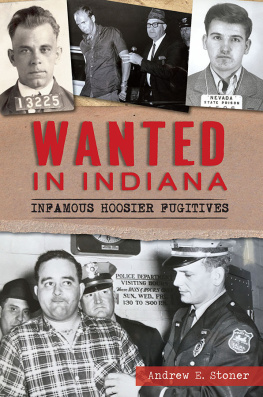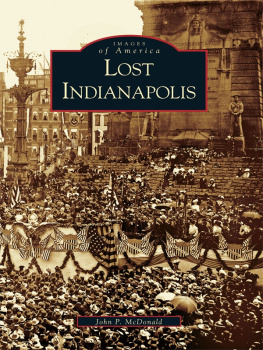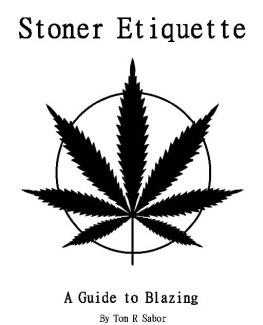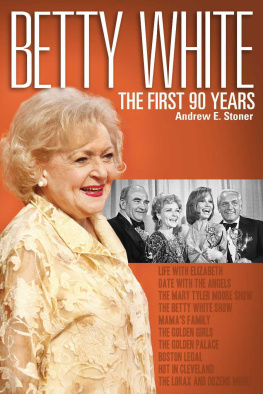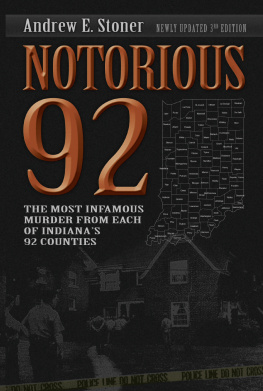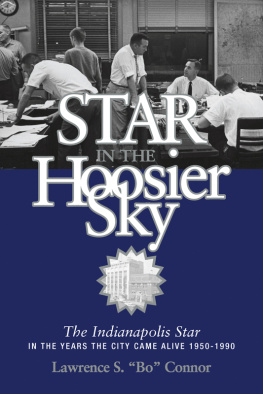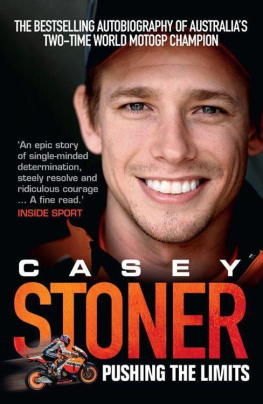

Published by The History Press
Charleston, SC 29403
www.historypress.net
Copyright 2011 by Andrew E. Stoner
All rights reserved
Cover images: Vice President Charles Warren Fairbanks; Western Union messenger boys at Monument Circle, circa 1908; above buildings (left to right) are U.S. Senator William D. Bynum, Mary Scott Lord Harrison and Caroline Scott Harrison. All cover images are from the Library of Congress. All contemporary images were contributed by photographer Steve Polston.
First published 2011
e-book edition 2012
ISBN 978.1.61423.339.8
Stoner, Andrew E.
Wicked Indianapolis / Andrew E. Stoner.
p. cm.
Includes bibliographical references.
print edition ISBN 978-1-60949-205-2
1. Indianapolis (Ind.)--History--Anecdotes. 2. Indianapolis (Ind.)--Biography--Anecdotes. 3. Indianapolis (Ind.)--Social conditions--Anecdotes. 4. Indianapolis (Ind.)--Moral conditions--Anecdotes. 5. Crime--Indiana--Indianapolis--History--Anecdotes. 6. Corruption--Indiana--Indianapolis--History--Anecdotes. 7. Scandals--Indiana--Indianapolis--History--Anecdotes. I. Title.
F534.I357S86 2011
977.252--dc22
2011016280
Notice: The information in this book is true and complete to the best of our knowledge. It is offered without guarantee on the part of the author or The History Press. The author and The History Press disclaim all liability in connection with the use of this book.
All rights reserved. No part of this book may be reproduced or transmitted in any form whatsoever without prior written permission from the publisher except in the case of brief quotations embodied in critical articles and reviews.
For Randolph E. Scott.
Contents
Introduction
Every major American city can lay claim toor attempt to denyany number of scandals or homegrown scoundrels or even disasters that people would rather forget. Indianapolis is no different. As the capital of Indiana, its been more than the Crossroads of Americaits also been the crossroads of incredible incidents of happenstance and planning.
Contained here are some of the stories you wont find in the states history booksstories left out of the fourth-grade Indiana history curriculum required of all Hoosier schoolchildren. But love it or hate it, these stories are also an important part of the amalgam that is Indiana at the heart of the nation.
In telling some of the most incredible stories in Indianapolis history, we learn more about ourselves and our values. When we look at political scandal, major disasters, criminal activity and the role celebrities play in our culture, we gain a greater sense of what it means to be Hoosier. As a people, we dont tolerate scandal, scoundrels or criminals. We often watch with a sense of curiosity what the celebrities who come through Indianapolis impart. Most of all, we gather up our best efforts and respond with compassion and action when disaster strikes.
As you read this story of Indianapolis, written by someone who has grown to love the Circle City, refresh your memory of some of the big events that came along. And dont share this book with outsiders. Theyll never understand.
To learn more about major Indianapolis events such as the LaSalle Street murders and the Sylvia Likens case, or about a variety of other major crimes, see Historic Indianapolis Crimes: Murder and Mystery in the Circle City, another History Press title by Fred D. Cavinder.
Part I
Infamous Celebrities
PLANE CRASH CLAIMS HOOSIER FILM LEGEND CAROLE LOMBARD
The Friday morning, January 16, 1942 edition of the Indianapolis Star carried a four-column picture of Hollywood legend Carole Lombard (19081942) posing for a photo with Indiana governor Henry F. Schricker (18831966) and Indianapolis mayor Reginald H. Sullivan (18761980) as the U.S. flag was raised to start a war bonds rally on the east steps of the Indiana Statehouse.
It was one of the last stops on her whirlwind visit to her home state, resulting in more than $2 million in sales of American war bonds and stamps to support efforts to win World War II. Lombards effort set a single-day bond sale record and easily surpassed the campaigns goal of $500,000. She personally signed autographs for each bond purchased and later told a downtown Indianapolis crowd, This has been a wonderful, memorable day. Nothing could have made me happier than your kind invitation to share it with you and to be in Indianapolis tonight.
Hoosiers were rightfully enamored of Lombard, a Fort Wayne native. Only thirty-two years old, she was already a major film star and the wife of fellow film legend Clark Gable (19011960), reportedly earning a $465,000-per-year salary from MGMa massive sum in the 1940s.
Lombard and her mother, Elizabeth Peters (18771942), had taken a three-day train ride to get to Indiana from Los Angeles, but Carole longed for a quicker return trip. It meant boarding a TWA luxury liner just after 5:00 a.m. at the Indianapolis airport. There she signed her last known autograph ever in Indianapolis to a Howe High School studentas Carole Lombard Gable.
Lombard wanted to get home to see Gable, saying that she had never been away from him for longer than three days. Gables personal MGM publicity agent, Otto W. Winkler (19031942), flipped a coin to solve a disagreement between Lombard and her mother about whether to take the plane (or a train, as favored by Mrs. Peters).
TWA Flight 3, which would carry the party from Indianapolis, had originated in New York and was scheduled for several stops, including Albuquerque, New Mexico, and Boulder, Colorado, before arriving in Los Angeles. No direct flights were available, but Lombard was not to be deterred. The TWA liner was not a sleeping flight, but Lombard told reporters that she didnt mind. When I get home, Ill flop in bed and sleep for 12 hours, she said, smiling.
The flight ran behind schedule all day, however, and the TWA pilot changed plans and replaced Boulder (an airport with no nighttime runway lights) with Las Vegas. In Albuquerque, media reports indicated that twelve army crewmen and one civilian boarded the plane. The trip to Vegass airport was uneventful, and the plane landed there at about 6:36 p.m. and added fuel. The plane departed the Las Vegas airport at 7:07 p.m. local time.
By 7:20 p.m., the plane had lost radio contact with the Las Vegas tower. At almost 7:23 p.m., workers at the Blue Diamond Mine reported that they saw a flare, then heard an explosion about thirty miles southwest of the city.
The plane, traveling at more than 150 miles per hour, had slammed into the top of Mount Potosi [also known as Olcott or Table Rock Mountain]the plane had failed to clear the mountaintop by fewer than 60 feet. The gasoline tank, located under the passengers, exploded, recounted author Robert D. McCracken in his book Las Vegas: The Great American Playground.
Media reports indicated that Gable rushed from Los Angeles to Las Vegas via another flight, had to be dissuaded from attempting to climb to the crash site and ultimately remained secluded at a Las Vegas hotel, described as badly broken up. Fellow actor Spencer Tracy (19001967) traveled with Gable and consoled him.
Gable and other family members of the twenty-one passengers on board (in addition to Lombard) waited all day Saturday and into Sunday until posses returned from the area with the grim news: there were no survivors; the plane and everyone on board had died of blunt-force injuries or had burned to death.
Next page

